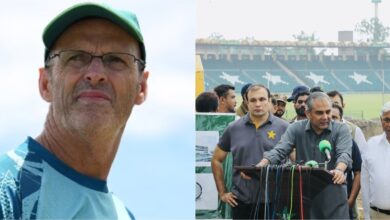Back story: more resources, better reach, help from unsung mentors | Sport-others News

India’s tally at the 2002 Asian Games was 36 medals. In 2014, that count climbed to 57. And 2023 saw the giant leap, as the century barrier was broken. What explains this three-fold surge? The answer lies in the stories of 256 Hangzhou medalls.The Indian Express investigation threw up a series of telling numbers. Take two: Around 65 per cent of the medalls are from families with less than Rs 5 lakh income per annum and 33 per cent were born and raised in rural India.
That they are making it to the podium underlines the significant strides in last-mile connectivity in the sporting ecosystem under which funds and technical support are reaching the athletes timely and efficiently.
From government policies, like the Target Olympic Podium Scheme (TOPS), to key timely interventions not-for-profit organisations, these elite athletes have a much wider range of resources at their disposal than their predecessors.
At Rs 3397 crore this year, the allocation for Sports the Centre has almost doubled since 2014-15. The increase in funding, budgetwise and tailored to needs, has resulted in elite athletes having access to top-level training centres anywhere in the world, the expertise of foreign coaches and the freedom to crisscross the globe to participate in international events. All these factors work on getting them better prepared for a multi-discipline event.
The Asian Games is no means a measure of success at the Olympics. More so, because a bunch of medals in Hangzhou came in events that aren’t in the Olympics and, in many, the level of competition will increase several fold in Paris come July-August 2024.
However, with 88 of the medalls still less than 23 years in age — 34 per cent — it is from this bunch that the future Olympic medalls are likely to emerge.
The investigation also confirmed that in nearly all cases, this access to funds was possible only when the athlete reached a certain level and showed some promise. The spadework on the ground was done unheralded coaches, who ran makeshift academies with basic amenities but opened their doors to children from underserved backgrounds, charged no or nominal fees and shared their knowledge.
These faceless, selfless heroes — dozens of them in all parts of the country — enabled young athletes to take the first step, even if they themselves were ridiculed.
Consider these:
* Former hockey international Pritam Siwach started her academy on what was once a grazing land after a casual conversation with her husband back in 2004. In Hangzhou, two of her prodigies — Nisha Warsi and Neha Goyal — stood on the podium.
* Sanjeeva Singh, a player-turned-coach, introduced compound archery in India after watching it in New York in 2004. Twenty years later, compound archers completed an unprecedented gold medal clean sweep at the Asiad.
* Rowing coach Ismail Baig thought out of the box and turned to one of India’s driest states, Rajasthan, for athletes who could compete in a gruelling water sport. Today, eight Army jawans from Rajasthan are Asian Games medalls.
When these coaches began two decades ago, sport wasn’t considered a priority socially, politically or even recreationally. Yet, through individual enterprise – jugaad, in other words – they kept going.
In places where passionate, enterprising coaches weren’t there, the gap was filled adventurous families, who built a wrestling pit or makeshift shooting range at their homes to give birth to a sporting career.
These journeys also capture the changing attitude towards sport.
There are some glaring gaps, too. Despite the big strides, sport remains a largely unorganised sector where there’s little reliance of science to scout players. The lack of Plan B among the majority of athletes, as highlighted the data, is telling.
Entry-level barriers ex in several sports. Hockey’s demise in its erstwhile hubs should be a concern. College-level sport, a big source of athlete identification and development in the West, is missing from conversations. But in the larger context, there are reasons to feel optimic – the 256 medals in this year’s Asiad have surely paved the way to more journeys to the podium.







